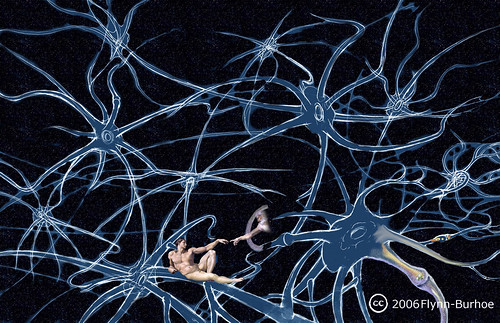675 - Gloop - Pattern
Image by Patrick Hoesly
This seamless texture was illustrated by Patrick Hoesly and is released under the Creative Commons Attribution license. You may download and use this texture as you like. All that I ask is please give credit to me and a link back to this Flickr page.
Please leave a comment and if you like this image, mark it as a favorite. Thank You.
What is a Seamless Texture / Pattern?
A seamless texture is an special image, where one side of a image exactly matches the opposite side, so that the edges blend into each other when repeated. Seamless textures are used for desktop wallpaper, webpage backgrounds, video games, Photoshop fills and in 3D rendering programs.
Shameless Plug about Me:
Patrick Hoesly is the owner and lead illustrator of ZooBoing Illustrations, a company specializing in architectural illustrations, graphic design, and marketing material. Our goal is to be the people who help you dream it, design it and draw it.
Learn more about how we can help you over at www.zooboing.com/
Beautiful landscape
Image by MyTudut
Beautiful landscape
7 Billion Plebes Under the Sea
Image by Jeanne Masar
Make It Interesting ~ Challenge #3 - Globe
Starter image with thanks to Norman B Leventhal Map Center at the BPL
Water Paintbrush - anaRasha-stock
Nautilus - Tom Scherman
Octopus - Here
Water textures = Here and here
Bubbles - Edelihu
Synaptic Gasp
Image by ocean.flynn
I have been working on this Adobe Photoshop Image which seems to keep getting larger and larger. I first sketched out the movement I wanted using 2B Pentil on paper. I was working with several images of neural architecture as models but the movement and composition looked like dozens of images I've painted and drawn over the years. The I scanned the full-size image on a flat bed scanner. In Adobe Photoshop I inverted the positive/negative aspect under Image > Adjustments > Invert. Under Image>Mode I converted the image from RGB to Greyscale then to RGB again so I could adjust the colours to one I hoped would be easier to paint with. I deleted the background so I could have a transparent layer to work with. I used the Magic Wand tool to delete the spaces between neurons. (Some of this work must feel a little like users of video games where you target and delete). I like to use both the eraser, blurring and cloning tools at this stage with full ranges of Master Diameter and Hardness . I used the starry night wallpaper for the background. I tried to keep Michaelangelo out of this but I kept thinking of the layered image I made recently inspired by Charles Taylor's response to William James' Varieties of Religious Experience. Adam looks ridiculous on the neuron branch. I had fun with the shell turned into neuron around the image of Michaelangelo's depiction of the Creator.
I keep making sketches of close-ups so now I am trying to imagine terminal nerve fibres entwined in neurofilament, proteins at the interface of the downstream end of neuron’s dendritic spine and an excitary synapse. I used Adobe Photoshop's pattern tool to create the translucid cell membrane encasing the nerves along which electrical impulses flow. I am not satisifed with the detailed synaptic gap so I have started to examine more closely what goes on under the cellular membrane. The synaptic vesicle reminds me of pomegranite seed in some images so I want to play with that a little more. I continue to collect images of synapses and keep track of them on my del.icio.us and my Google customized homepage using .rss feed. I still need to use pencil and paper to understand the relationships. It is strangely relaxing. This type of layered image is never complete. As I learn more about Adobe Photoshop options I will try different tools. (Thank you by the way to the Orton Group. I haven't tried their suggested tools on any of my work yet but I probably will at some time.)
The synaptic cleft in the human brain reminds me of the gap between the hand of God and Adam in Michaelangelo’s visualization of Creation. My mind is stuck on the image of the gap. That’s the leap of faith between that which we can know and that which is beyond our capacity to know. In the human brain this synaptic gap is so macroscopic no one has ever seen it. But there are amazing images that are somewhat like science fiction as artists attempt to compile scientific data into visualizations of what it might look like. I am not attempting to be a science illustrator. But I think somehow this image will be like a cartography of a way of thinking that resonates more with complex hyperlinkages than with the human brain.
The brain is a supersystem of systems. Each system is composed of an elaborate interconnection of small but macroscopic cortical regions and subcortical nuclei, which are made of microscopic local circuits, which are made of neurons, all of which are connected by synapses (Damasio 1994:30).
Neurons must be triggered by a stimulus to produce nerve impulses, which are waves of electrical charge moving along the nerve fibres. When the neuron receives a stimulus, the electrical charge on the inside of the cell membrane changes from negative to positive. A nerve impulse travels down the fibre to a synaptic knob at its end, triggering the release of chemicals (neurotransmitters) that cross the gap between the neuron and the target cell, stimulating a response in the target (Baggaley 2001:104).
Damasio (1994) describes the neural underpinnings of reason and challenges Cartesian dualisms of mind/body, emotions/reason. Feelings and logical thinking are not like oil and water.
The “body [. . .] represented in the brain [constitutes] an indispensable frame of reference for the neural process that we experience as the mind (Damasio 1994:xvi).”
Our bodies are the ground reference for the construction we make of the world. Our embodied selves construct the ever-present sense of subjectivity, our experience. The body becomes is the instrument through which we construct our most refined thoughts and actions (Damasio 1994:xvi).
Baggaley, Ann, Ed. (2001), “Anatomy of the Human Body,” Human Body, Dorling Kindersley Publishing: NY, p. 104.
Damasio, Antonio R., 1994, Descartes’ Error: Emotion, Reason, and the Human Brain, Grosset/Putnam: New York.
Damasio, Hanna, (1994) “Gage’s skull, illustrations” in Damasio, Antonio R., 1994, Descartes’ Error: Emotion, Reason, and the Human Brain, Grosset/Putnam: New York. p. 31-2.
Johnson, Graham, (2005), “The Synapse Revealed,” 23 September 2005, Science Magazine and the National Science Foundation.
The first place winner of the Science and Engineering Visualization Challenge was Graham Johnson from Medical Media, Boulder, Colorado. His image is described on Science Magazine’s web page:
Deep inside the brain, a neuron prepares to transmit a signal to its target. To capture that fleeting moment, Graham Johnson based this elegant drawing on ultra-thin micrographs of sequential brain slices. After scanning a sketch into 3D modeling software, he colored the image and added texture and glowing lighting reminiscent of a scanning electron micrograph.
No comments:
Post a Comment